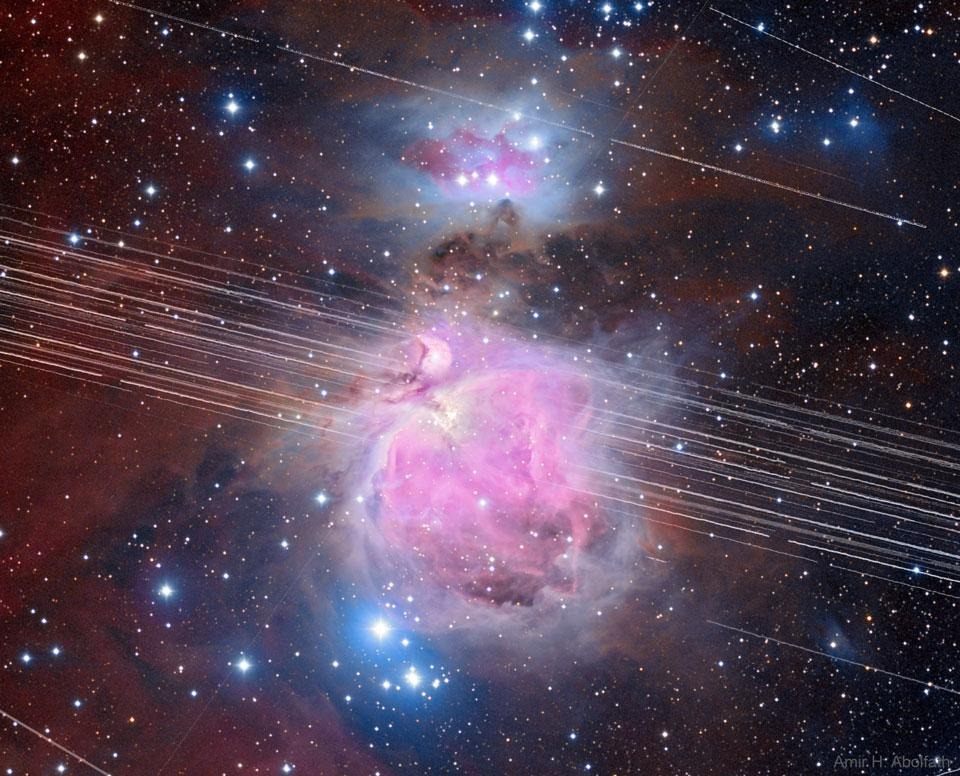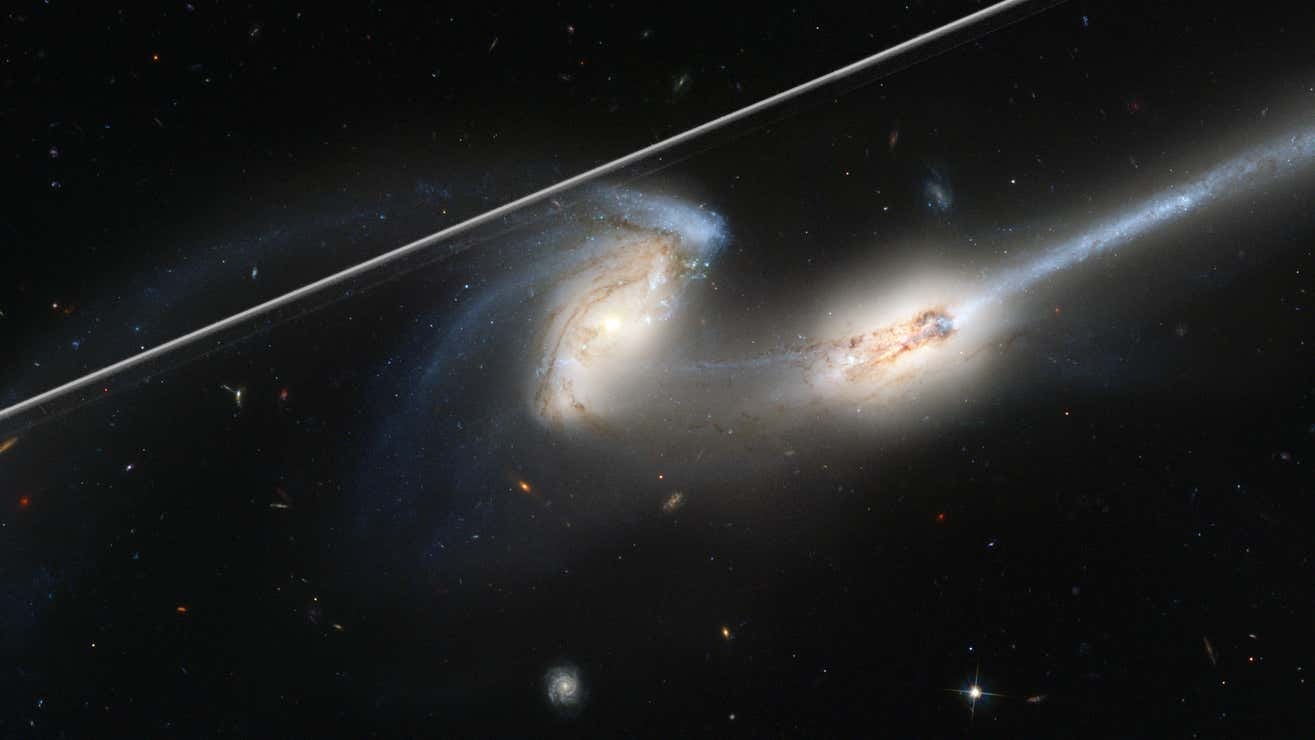The Hubble Space Telescope performs its observations from low Earth orbit, but numerous artificial satellites are located at high altitudes above the planet. This leads to the appearance of bright stripes on Hubble images and creates some difficulties for researchers.

Scientists from the Space Research Institute using the Space Telescope (STScI) have developed a new tool that helps to identify traces of satellites in Hubble images. It uses an improved telescope camera with a larger field of view than previous models.
Scientists note that these bands from satellites are an inconvenience, but not a critical problem. They appear only on 10% of the images taken by the space telescope. However, these distortions affect the results of research.
Fortunately, Hubble performs several exposures for each observation. Therefore, the tools developed by STScI scientists make it possible to remove satellite bands from the images obtained using other exposures from the same observation. A new study shows that satellites most likely do not pose a serious threat to Hubble, thanks to the developed software that reduces this negative effect.
In turn, the newest James Webb Space Telescope avoids this problem because it is located at a point in space, about 2 million kilometers away from Earth, outside the orbit of any satellites.
Worsening of the Hubble problem
With the growing number of artificial satellites (according to STScI, their number is about 8000), tools for removing noise from images are becoming increasingly important. The new software developed to detect bands from satellites in Hubble images is ten times more sensitive than previous tools created by STScI.

While Hubble can effectively correct satellite light in its images, astronomers have expressed concern about the noise generated by satellite constellations such as SpaceX’s Starlink. The future generation of Starlink satellites may be brighter than their predecessors, potentially exacerbating this problem.
It should also be noted that terrestrial observatories also face the problem of distortion of images from space due to increased light pollution caused by artificial lighting on Earth. Therefore, even if the Hubble team finds some relief, the astronomical community remains wary, at least until such technologies are introduced into other astronomical tools other than this famous veteran space telescope.
Earlier we reported on how the technology of total elimination of light pollution improved astrophotography.
According to Universe Today
Follow us on Twitter to get the most interesting space news in time
https://twitter.com/ust_magazine
